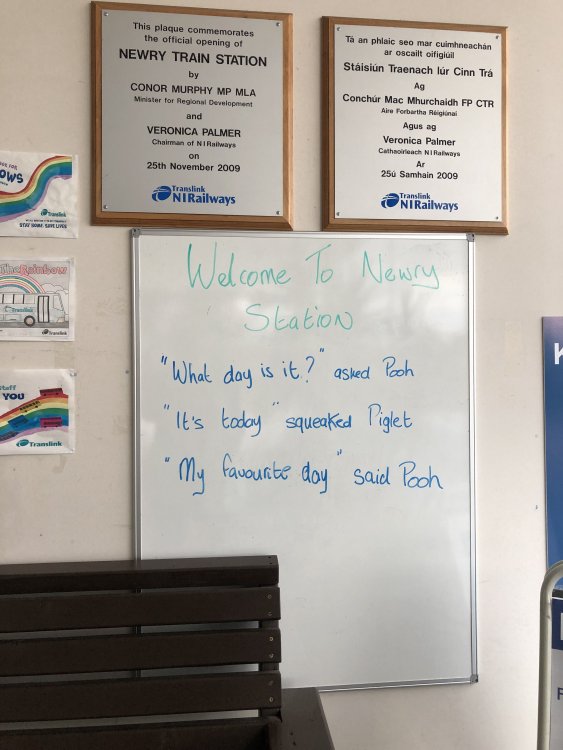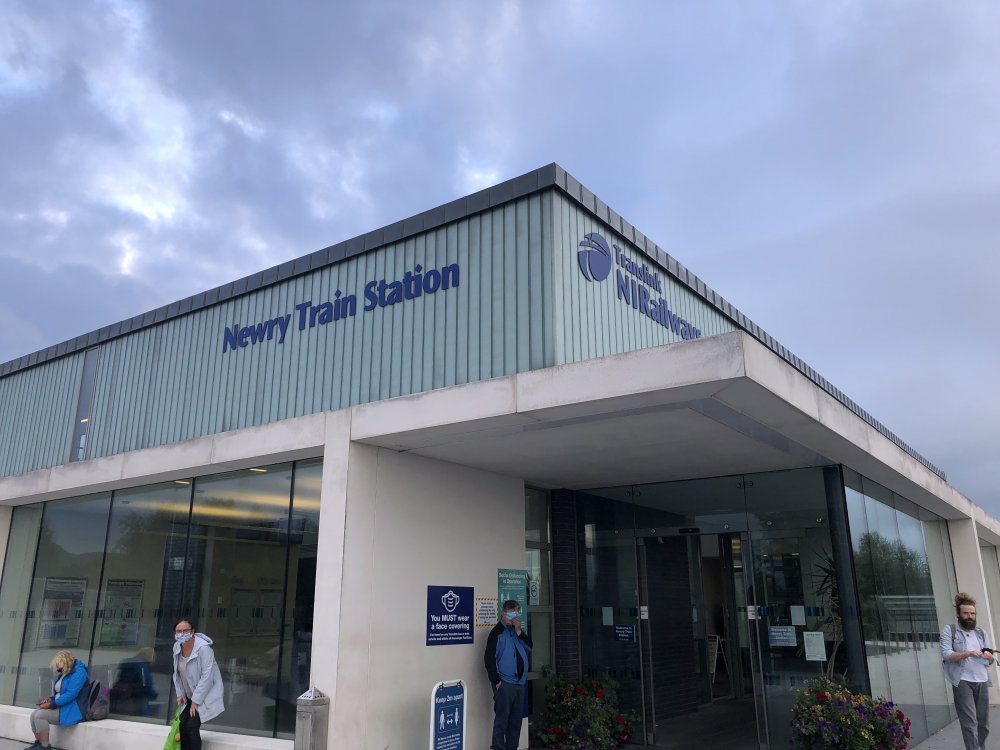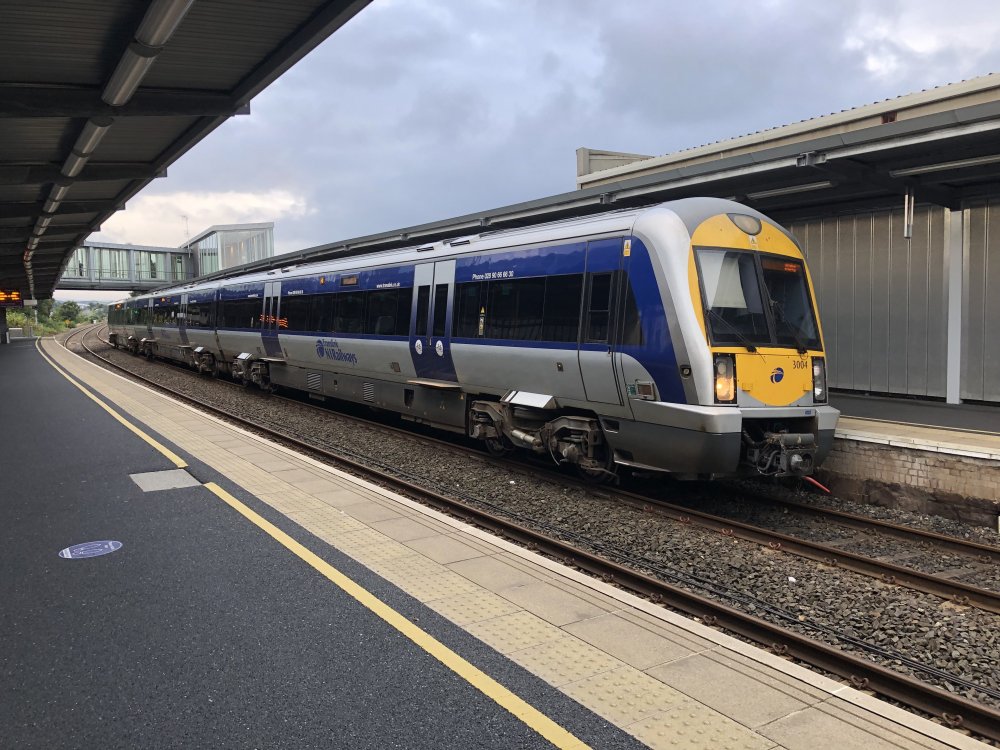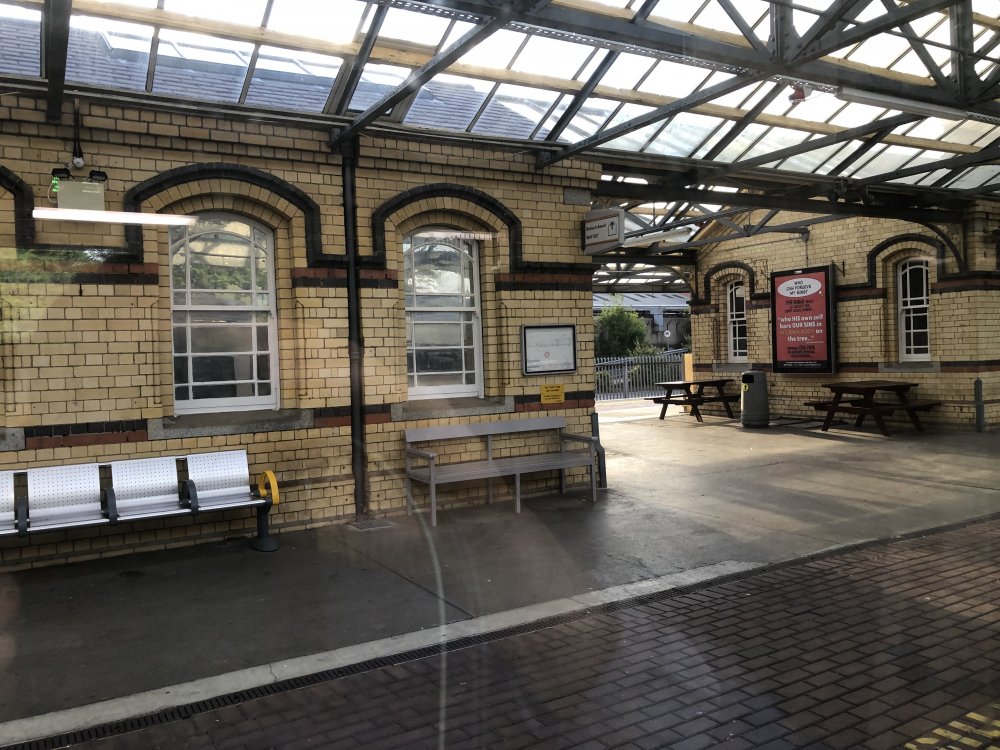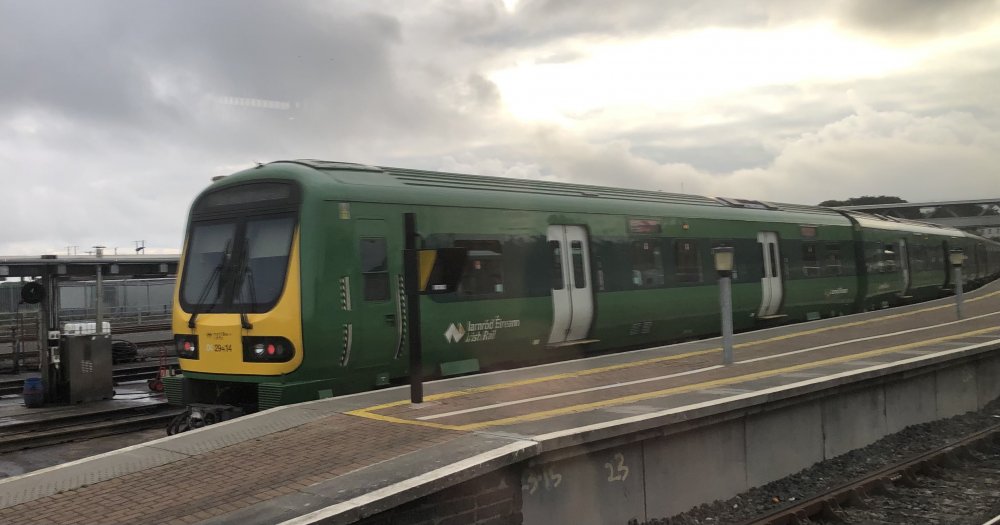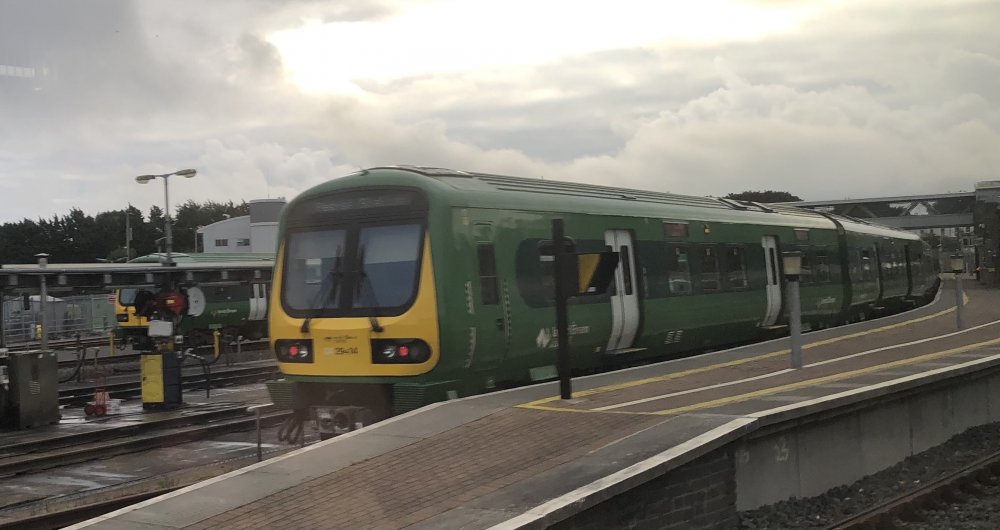-
Posts
15,853 -
Joined
-
Last visited
-
Days Won
393
Content Type
Profiles
Forums
Events
Gallery
Everything posted by jhb171achill
-
And there was me thinking that "Abtus Voidneter" was a nasty character out of a Harry Potter novel........
-
There's one about to appear from my end of things, relating to the Tipperary area (should be out before the end of October), and another after that which is in progress.......... I'm not the only one who spent the lockdown at a keyboard, it seems!
-
Looks good! Nice pic of the Loughrea train on the cover........
-
What IS it? What does it do? Personally, I've never even heard of it.....
-
Yes, thought so - the one in front also could indeed be a “Popular”, though I thought they had a slightly extended boot?
-
Close enough to 1961! The car on the left? Possibly…. I thought A35?
-
Photographic Website Updates
jhb171achill replied to thewanderer's topic in Photos & Videos of the Prototype
Customer trains today. A green tube class at Drogheda and other ones outside the EU. Was in “Newry Train Station”. It’s on the exact site of Bessbrook RAILWAY station. It has a strange notice about Winnie the Pooh, instead of the more traditional threats as to what might befall those who trespassed upon the line of railway, or didn’t adjust their dress when leaving the conveniences. Strange, weird stuff. And not a goods train in sight. I blame brexit. Bottom one is Ballymena, with the NCC water tower behind it - this side of it was used to water BNCR (main line) / NCC trains, while the long disused and thoroughly overgrown far side of it was used by the narrow gauge Ballymena & Larne trains - Ireland’s only narrow gauge expresses. -
Depends if it has kadees or not.
-
Wexford Model Railway Club Festival Open Day 2021
jhb171achill replied to Irishrailwayman's topic in What's On?
We will trust your recommendation, Irishrailwayman........... (I'm going anyway...!) Was just looking at the train service - it's perfectly feasible, actually. Methinks I will take the train rather than propelling my infernal combustion vehicle in that direction. Always liked travelling on the Dublin & South Eastern Railway. Might get one of the big 4.4.0s.- 98 replies
-
- 3
-

-
- model railway exhibition
- trade stands
- (and 3 more)
-
Wexford Model Railway Club Festival Open Day 2021
jhb171achill replied to Irishrailwayman's topic in What's On?
We'll need to bring a few civilised blue flags to put up there, though.......- 98 replies
-
- model railway exhibition
- trade stands
- (and 3 more)
-
Is it a steam crane? (Here's me bus....)
-
First ones into traffic 1965, yes, and in light grey. Brown after 1970. They were noticeably taller than standard vans (a fact that incidentally Dapol seem to have overlooked - but theirs is simply a reliveried British one).....
-
Should have added, the GSWR third is ex-Rosslare Express.
-
That will be a Wexford - Rosslare local, probably. The two carriages are green and the tin van filthy "silver", so it's 1958-62 or very close to that. You've a GSWR 1906-era third class coach and a comparatively modern (post-1956-ish) laminate. The loco is as grubby as one would expect..... The cars are (left) a comparatively new (1960?) Austin A35, and what I suspect may be a 1950/1/2 Ford Prefect (right, partly out of sight). A Ford "Thames" (or maybe VW?) van crosses the level crossing behind the train; with all these clues I'm going to say it's definitely 1961 or 1962.
-
When the Mk 3s were being introduced to traffic, I was in Inchicore one day (1986, I think?) but there were still a few of them not yet finished. While the bodies were in a light green undercoat, there were bogies about the place with all manner of colours on various components; they were in "factory" colour - whatever way they were when they came out of the Murphy Models packet. But those entering traffic had the bogies in black. Possibly a few escaped with replaced components which hadn't been painted the "livery" colour - this is almost certainly what's behind the current idea where increasingly bogies are not brown like the wagon they are under, but a mix of the colours of their components. Maybe some are even in Tyrone or Mayo colours today.......
-
I watched a radio once, but it didn't do anything.
-
I must fish out a report I have of an all-Ireland day in the LATE fifties. The amount of specials and what they consisted of is mind-boggling.
-
I’m sure Tara Junction is choked with specials from Westport, Ballina, Castlebar and Claremorris today!
-
I couldn’t be certain but it was well after the last of the fertiliser wagons. I guess about 20 years ago? Maybe a bit less?
-
I detest them. I also mute the sound the second they come on, and I make an absolute point of NOT EVER buying the product or service of the more annoying, longer or more repetitive ones. Current hates are anything to do with VHI or those beer ads with the creepy looking weird Dutch guy who ends every boring adventure by staring at you and saying "probably". Or maybe he's Danish. Who gives a toss.
-
Correct. NIR were at that a long time ago, but on IE it’s comparatively very much more recent. It was plain brown bogies on non-passenger stock, and plain black on carriages. The 2600-class had plain light grey bogies from Day 1, but that’s a separate story.
-
Very good job, that!
-
Wexford Model Railway Club Festival Open Day 2021
jhb171achill replied to Irishrailwayman's topic in What's On?
I've a dang good mind to set sail for Wexford that day. Is this place walkable from Wexford railway station or should I self-guide my own infernal combustion machine?- 98 replies
-
- model railway exhibition
- trade stands
- (and 3 more)
-
All the steam engines appear to be green NCC "Jeeps"! But - they have that certain atmosphere of old railway posters........
.png.c363cdf5c3fb7955cd92a55eb6dbbae0.png)


